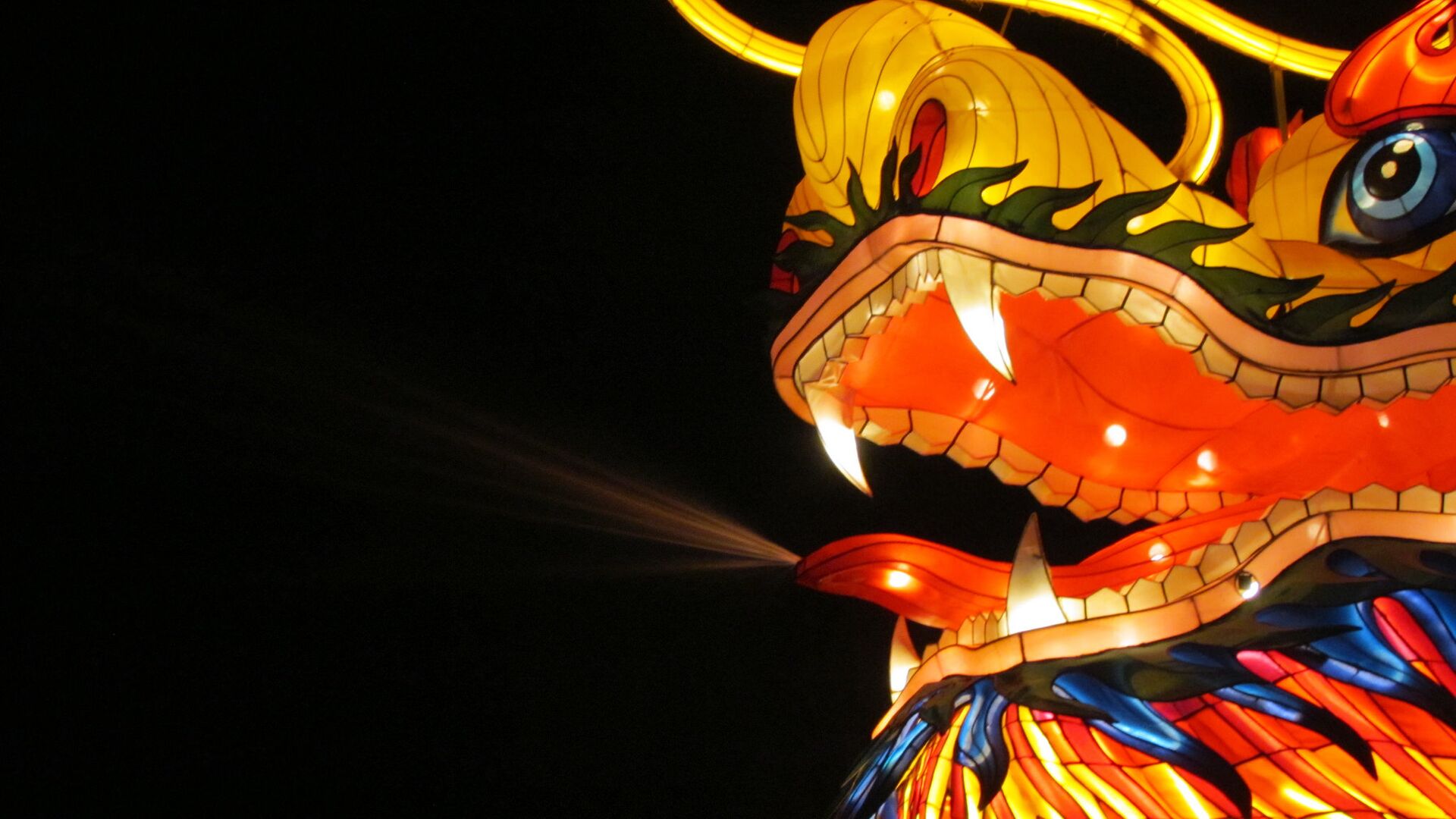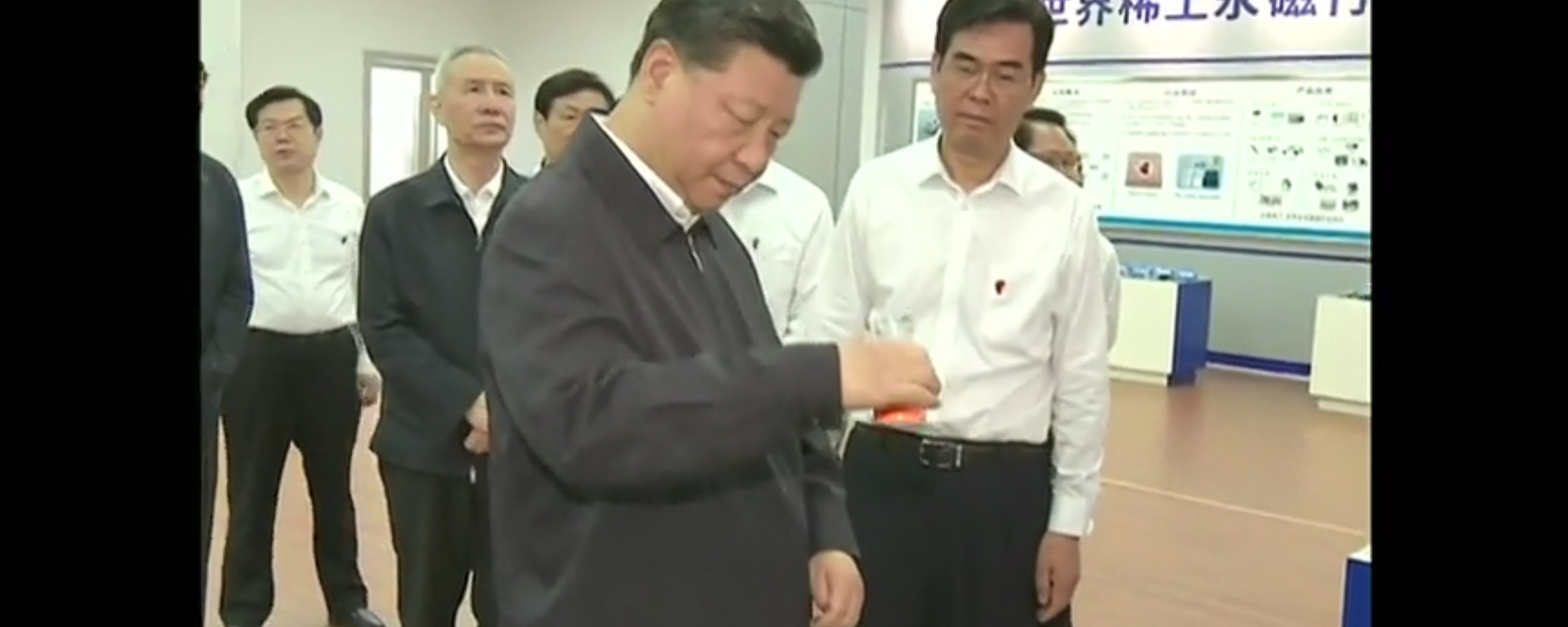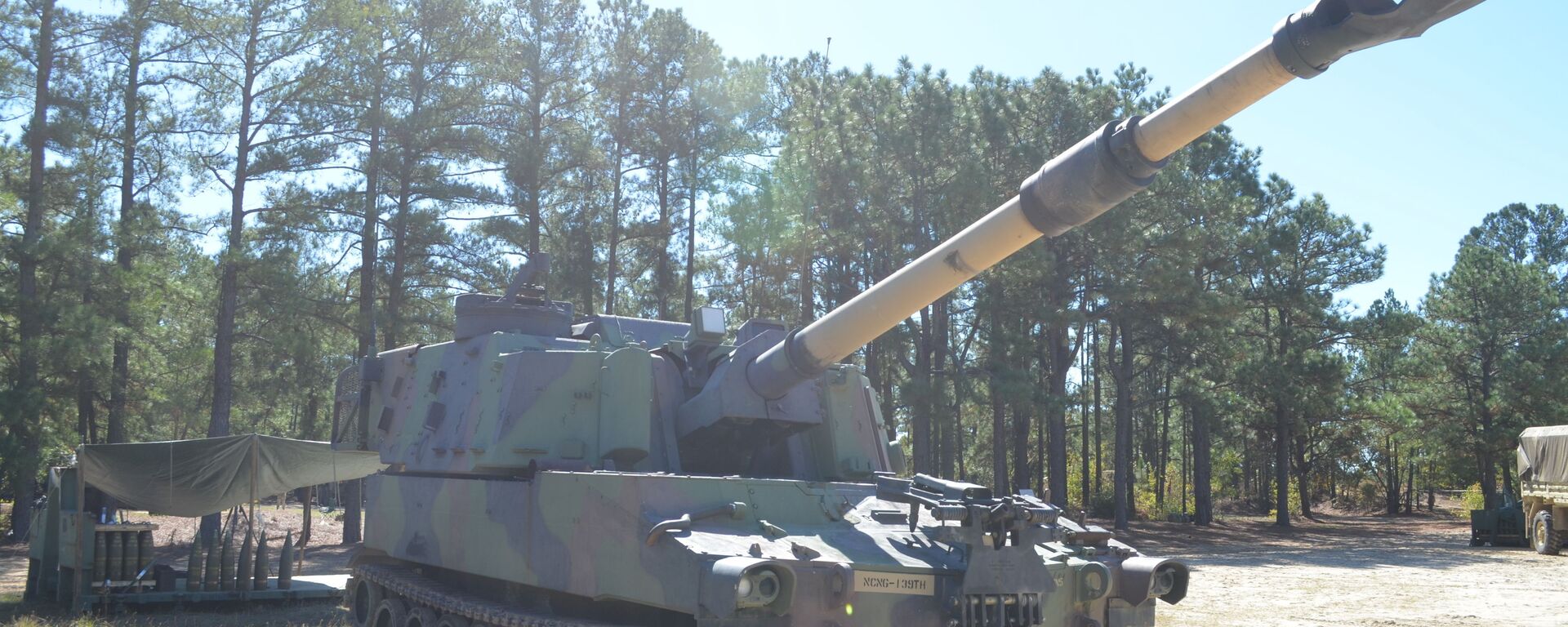https://sputnikglobe.com/20230208/prc-challenging-us-across-almost-all-domains-but-war-avoidable-if-america-doesnt-poke-the-dragon-1107089567.html
PRC Challenging US ‘Across Almost All Domains’, But War Avoidable if America Doesn’t Poke the Dragon
PRC Challenging US ‘Across Almost All Domains’, But War Avoidable if America Doesn’t Poke the Dragon
Sputnik International
During his State of the Union speech, President Biden boasted that his administration’s investments in the military, US alliances and American technology and innovation put Washington in its “strongest position in decades to compete with China.” House lawmakers have to some very different, and alarming, conclusions.
2023-02-08T19:50+0000
2023-02-08T19:50+0000
2023-06-19T12:45+0000
analysis
china
us
house armed services committee
threat
taiwan
https://cdn1.img.sputnikglobe.com/img/106548/66/1065486612_0:0:2048:1152_1920x0_80_0_0_f65d7aceaaa696770d0fa5ee090b7028.jpg
“I’m committed to work with China where we can advance American interests and benefit the world. But make no mistake about it: as we made clear last week, if China threatens our sovereignty, we will act to protect our country. And we did,” Biden said during his big speech to Congress Tuesday night, referring to his decision to pop a Chinese balloon flying off the US East Coast over the weekend.“We face serious challenges across the world. But in the past two years, democracies have become stronger, not weaker. Autocracy has grown weaker, not stronger. Name me a world leader who would change places with Xi Jinping. Name me one! Name me one!” Biden boomed, wagging his finger and furrowing his brow. “Bridges are forming between partners in the Pacific and those in the Atlantic. And those who bet against America are learning how wrong they are. It’s never, ever been a good bet to bet against America. Never!” Biden added, sparking roaring applause and chants of “USA! USA! USA!” from gathered lawmakers.Earlier in the day, the House Armed Services Committee met to discuss China, coming away with a decisively more somber assessment of America’s military, technological and economic capabilities vis-à-vis the People’s Republic. Beijing, it turns out, is no longer just a 'near-peer adversary' to the United States, but a full-blown 'peer' challenger.“If we fail to acknowledge [the Chinese threat] and take immediate action to deter it, the next 30 years would be devastating for our nation,” House Armed Services Chairman Mike Rogers warned in his introductory remarks.“The People’s Liberation Army has gone from an obsolete force barely capable of defending its borders to a modern fighting force capable of winning regional conflicts. The Chinese Communist Party now controls the largest army and navy in the world, with the goal of having them fully integrated, modernized by 2027. The CCP is rapidly expanding its nuclear capabilities. They have doubled their number of warheads in two years. We estimated it would take them a decade to do that. We’ve also just been informed by the Department of Defense that the CCP now has more ICBM launchers than the United States,” Rogers added, citing a recent report to Congress by STRATCOM.Pointing to Chinese advances in space, the People’s Liberation Army’s activities in the South China Sea, aerial and naval operations around Taiwan, and moves to establish a military and intelligence presence overseas, Rogers warned that “the CCP is starting to outpace us on new battlefields as well.”Congressman Adam Smith, the ranking Democrat on the committee, echoed Rogers' concerns, touting the PRC as “the greatest threat we face to our national security objectives and the biggest problem that we face as a country,” and perhaps most importantly – a danger to the “rules-based international system.” That term is the current preferred jargon of the Biden State Department, and refers to Washington’s global geopolitical, military and economic primacy, which officials would like to preserve and expand as far as possible.Don't Poke the DragonChas W. Freeman Jr., a retired US diplomat and interpreter with decades of experience with China under his belt going back all the way to Richard Nixon’s 1972 visit to Beijing, where he served as the president’s main interpreter, says precision is crucial when talking about Chinese “threats” to America.The veteran diplomat says the crux of the US-China confrontation is centered around the fact that Washington has trouble reconciling with the fact that it is no longer the “supreme player” on the world stage, but rather “one player, among others.”International affairs observer and China expert Gal Luft echos Freeman’s sentiments, telling Sputnik that China doesn't want a war with the US, and would "only be a military threat if the US challenges the status quo over Taiwan.”Unlike the US, which is “overstretched and preoccupied with numerous threats and scenarios,” China’s military planning is focused on warfighting scenarios in its own neighborhood, which allows the PLA to “better optimize its resources," Luft says.“The PLA and the rest of the Chinese defense ecosystem are focusing on asymmetric warfare and their investments are targeted to very few relevant war-fighting scenarios,” the observer explained. As far as Taiwan is concerned, the observer noted that Beijing was “preparing for hybrid war which includes many non-kinetic elements - cyber, space, economic coercion etc. - with which it can bring the island into submission without actual invasion.”China Has Already Shifted the Regional Military BalanceTuesday's hearing featured a number of other bombshell admissions regarding China’s growing capabilities. Admiral Harry Harris, former commander of the US Pacific Fleet and United States Indo-Pacific Command, testified that today, “the modernization of the PLA has changed the regional military balance, and significantly enough that the United States no longer can be confident that we would decisively defeat every type of play.”What’s more, Harris said, it’s “infeasible” for the US to divert all of its global military potential toward China and Taiwan since the US cannot afford to pare down its commitments elsewhere around the world.“Attempting to demonstrate superiority for all contingencies” vis-à-vis Beijing “would require a commitment of forces that would inhibit the United States from behaving like the global power that it is with global interests to which its military must also attend,” the admiral said.China’s Navy surpassed the US’s in total size in late 2021, with Beijing planning to expand the fleet of warships and submarines to some 460 total by 2030, according to the Pentagon. The US currently has about 280 ships and subs, and unlike China’s, which are concentrated in the Pacific, these are spread across the world.Challenge ‘Across Almost Every Domain’In his testimony, Harris also touched on China’s economic and technological advances, warning that “China’s considerable military buildup could soon challenge the US across almost every domain. The PRC is making significant advances in missile systems, including hypersonics, fifth generation fighters, [a] blue water navy and the next wave of technologies, including artificial intelligence and advanced space and cyber.”US military raw materials security is also under threat by China, according to Harris, who urged Washington to “work in our own enlightened self-interest to develop our own reliable sources of various pharmaceuticals and chemicals for weapon-bearing independent of the PRC.”Pointing to a recent report by the Hudson Institute, a Washington-based security think tank, which highlighted US dependence on China for “a number of critical energetics materials” used in explosives and propellants for bullets, artillery and missiles, Harris urged the US to “invest and innovate to right the errant course that we’re on,” or risk a situation in which “Joint Force will struggle to compete with the People’s Liberation Army in our future battlefields.”US Right to Be Concerned by China's Technological BoomWashington has good reason to be concerned about China's military-technological rise, according to Freeman.“China does lead now in a number of militarily important technologies. It has installed, apparently, rail guns on its ships. We attempted to develop those but were unable to do so. Its air-to-air missiles out-range ours. It does have a range of hypersonic missiles. We don't we have a defense against those.” In addition, “China has famously developed ballistic missiles with terminal guidance that can strike an aircraft carrier a thousand miles away from the coast. The Chinese have, in fact, begun to develop technologies that we don't have that are important for our military purposes,” Freeman said.Ukrainian Lessons: A Blueprint for Taiwan?A big portion of Tuesday’s hearing focused on Taiwan, and the “lessons” the NATO-Russia proxy conflict in Ukraine may have for the US strategy vis-à-vis the island.“We need to apply those lessons and make sure that our military is modernized to meet the threats that we face today,” Adam Smith said. Calling the Ukrainian crisis “crucial” to the US’s “deterrence message against China,” the lawmaker suggested that if Russia was “able to achieve [its] aims lawlessly and through the use of military, that will only further embolden President Xi and his objectives in China.”Smith argued that “visible preparation” of Taiwan’s defense forces against a potential PLA incursion may also prove a deterrent, and called on the Pentagon to “enhance” the island’s “porcupine position in the defense concept” through “things like investments in short-range anti-air and anti-ship defenses, naval mines and so forth.”Admiral Harris confirmed that the military is looking at the “Taiwan front” through the lens of the “Ukraine front” to some extent.“Ukraine is the wolf closest to the sled and we had to deal with Ukraine today, but I think there is more juice in that orange, if you will,” Harris said, pointing to the delivery of evermore advanced weapons systems to the Eastern European country by the US and its allies over the past year.“I do believe that we need to do as much as we can for Ukraine, and we have the capacity to help Taiwan at the same time. It’s not binary,” Harris assured, when asked by a lawmaker to comment on the problem of the $19+ billion backlog of US weapons sales to Taipei, caused at least in part by arms deliveries to Kiev.Harris called on Washington to abandon its decades-old policy of “strategic ambiguity” vis-à-vis Taiwan in favor of “strategic clarity,” – i.e. an outright alliance, and urged for a bilateral free trade agreement to be inked “as soon as possible.”Either of these measures would undoubtedly be seen by Beijing as violations of multiple Sino-US agreements – including the diplomatic framework behind the One China principle – which requires Washington to refrain from diplomatic and military agreements with Taipei, and a 1982 communique requiring US arms sales to Taiwan to drop to zero over time.The former commander suggested that China’s leadership should “be reminded” of the potential for direct US-Chinese military-to-military engagement over Taiwan, and of “US military superiority in the Persian Gulf and Indian Ocean,” which “allows us to threaten the maritime shipping upon which China depends for access to energy, global markets and supply chains.”In his address to the 20th Congress of the Chinese Communist Party last fall, President Xi Jinping emphasized that Beijing is committed to peaceful reunification of the island with the mainland under the One Country, Two Systems model. He warned that “Taiwan is China’s Taiwan,” and that “resolving the Taiwan question is a matter for the Chinese, a matter that must be resolved by the Chinese.” Accordingly, Xi said, Beijing would “never compromise to renounce the use of force” to counter the aims of “outside forces and the few separatists seeking ‘Taiwan independence’.”Comparing Taiwan, Ukraine ‘Misguided’ at Best, ‘Nonsense’ at WorstLuft says comparing the crisis in Ukraine to a scenario of China-US conflict over Taiwan is at best “misguided,” because there are just “too many substantial geographical, operational, diplomatic and cultural differences that make it a very risky analogy.” At the same time, the observer noted, “the battlefield situation in Ukraine and the hesitancy of the West in providing essential platforms like tanks and planes will not inspire confidence in Taiwan.” The observer doesn’t expect Taipei to fall into the "trap" set by Washington as easily as Ukraine did in 2022, and believes ordinary Taiwanese may make their voice in preference of peace heard at the ballot box in 2024, where the liberal Progressive Democrats of President Tsai Ing-wen will face off against the nationalist Kuomintang – which favors rapprochement with Beijing.Freeman agrees with this assessment, suggesting that comparisons are “essentially nonsense,” with Ukraine a large European country with a long border with Russia and NATO, making it ripe for a proxy war, while Taiwan is a small island 100 miles (160 km) off the Chinese mainland, and 8,000 miles (12,800+ km) from America, in other words, “not next door.”Freeman fears that the attempts by US lawmakers and military commanders to link the Ukrainian and Taiwan “fronts” is not only absurd, but “dangerous,” because it indicates thinking in Washington that the US could somehow fight a proxy war with China over Taiwan.Freeman believes that if China has drawn any lessons regarding Taiwan from the conflict in Ukraine, it’s that “you should go all out from the beginning, use overwhelming force, decapitate the leadership so it can't have the kind of public relations counter-offensive that Mr. Zelensky has done and expect that the local population will not greet you with flowers and dancing girls, but with guns and bayonets and prepare accordingly…They don't want to get into a war of attrition. They want to do something that will be sudden and decisive if they have to at all. But they like the Russian government in the run up to the Ukraine war, want to settle this diplomatically, politically, through dialog across the Taiwan Strait. The last thing on earth they want is a war over part of their territory,” he emphasized.Today's US is Yesterday's USSRIn a speech before the American Academy of Diplomacy earlier this week, Freeman suggested that in some ways, the US in relation to China today is in the same position the USSR was in relation to the US during the Cold War.“It's a theory which has some basis that it was the pressure of military competition with the United States that caused the Soviet Union to divert too much investment to its military while it neglected the needs of its civilian population and its economy. This ultimately caused the Soviet Union essentially to go bankrupt,” Freeman said in his interview with Sputnik.“The problem was that the Soviet Union had a much smaller economy and a much less vigorous civilian economy than the United States, and it had limited capacity to ramp up its defense budget. That defense budget went up to somewhere around 12 to 15% of GDP, which is an extraordinary level in the case of the United States today. Every dollar that we spend on defense and then some is borrowed. We are not paying our own way. We do not have the capacity to surge the budget upward in the event of a war,” the observer noted.Ultimately, the observer believes that Sino-US tensions will continue for quite some time “before we return to a rational, peaceful, mutually cooperative and beneficial relationship. In the meantime, we will have tensions. And what we've just shown with the balloon nonsense is that we don't know how to handle the crisis. And that's pretty dangerous, pretty frightening.”
https://sputnikglobe.com/20221208/china-possibly-surpasses-us-in-number-of-nuclear-warheads-reports-say-1105177350.html
https://sputnikglobe.com/20230208/china-and-us-military-strength-compared-1107086943.html
https://sputnikglobe.com/20230120/taking-on-russia--china-biden-needed-only-two-years-to-push-world-to-verge-of-war-scholars-say-1106536013.html
https://sputnikglobe.com/20220605/prc-could-starve-us-military-industrial-complex-of-ability-to-build-weapons-with-one-move-report-1096026836.html
https://sputnikglobe.com/20210609/pentagon-seemingly-drops-quest-for-ship-based-electromagnetic-railgun-1083104479.html
https://sputnikglobe.com/20220502/taiwan-forced-to-go-howitzer-free-as-us-military-industrial-complex-pumps-out-guns-for-kiev-reports-1095203610.html
https://sputnikglobe.com/20230128/senior-us-general-predicts-war-with-china-in-2025-urges-airmen-to-prepare-to-come-home-in-body-bags-1106791710.html
https://sputnikglobe.com/20221127/taiwans-ruling-dpp-party-suffers-major-loss-in-local-elections-1104740628.html
https://sputnikglobe.com/20230208/senior-chinese-diplomat-no-point-to-blinken-visit-after-seeming-us-reversal-on-balloon-reaction-1107089164.html
china
taiwan
Sputnik International
feedback@sputniknews.com
+74956456601
MIA „Rossiya Segodnya“
2023
News
en_EN
Sputnik International
feedback@sputniknews.com
+74956456601
MIA „Rossiya Segodnya“
Sputnik International
feedback@sputniknews.com
+74956456601
MIA „Rossiya Segodnya“
china, us, threat, taiwan, ukraine, house armed services committee
china, us, threat, taiwan, ukraine, house armed services committee
“I’m committed to work with China where we can advance American interests and benefit the world. But make no mistake about it: as we made clear last week, if China threatens our sovereignty, we will act to protect our country. And we did,” Biden said during his big speech to Congress Tuesday night, referring to his decision to pop a Chinese balloon flying off the US East Coast over the weekend.
“We face serious challenges across the world. But in the past two years, democracies have become stronger, not weaker. Autocracy has grown weaker, not stronger. Name me a world leader who would change places with Xi Jinping. Name me one! Name me one!”
Biden boomed, wagging his finger and furrowing his brow.
“Bridges are forming between partners in the Pacific and those in the Atlantic. And those who bet against America are learning how wrong they are. It’s never, ever been a good bet to bet against America. Never!” Biden added, sparking roaring applause and chants of “USA! USA! USA!” from gathered lawmakers.Earlier in the day, the House Armed Services Committee met to discuss China, coming away with a decisively more somber assessment of America’s military, technological and economic capabilities vis-à-vis the People’s Republic. Beijing, it turns out, is no longer just a 'near-peer adversary' to the United States, but a full-blown 'peer' challenger.
“If we fail to acknowledge [the Chinese threat] and take immediate action to deter it, the next 30 years would be devastating for our nation,” House Armed Services Chairman Mike Rogers warned in his introductory remarks.
“The People’s Liberation Army has gone from an obsolete force barely capable of defending its borders to a modern fighting force capable of winning regional conflicts. The Chinese Communist Party now controls the largest army and navy in the world, with the goal of having them fully integrated, modernized by 2027. The CCP is rapidly expanding its nuclear capabilities. They have doubled their number of warheads in two years. We estimated it would take them a decade to do that. We’ve also just been informed by the Department of Defense that the CCP now has more ICBM launchers than the United States,” Rogers added, citing a recent
report to Congress by STRATCOM.

8 December 2022, 07:15 GMT
Pointing to Chinese advances in space, the People’s Liberation Army’s activities in the South China Sea, aerial and naval operations around Taiwan, and moves to establish a military and intelligence presence overseas, Rogers warned that “the CCP is starting to outpace us on new battlefields as well.”
“They have leapfrogged us on hypersonic technology. They are fielding what we are still developing. They are making advances in air and quantum computing that we struggle to keep pace with,” the lawmaker said.
Congressman Adam Smith, the ranking Democrat on the committee, echoed Rogers' concerns, touting the PRC as “the greatest threat we face to our national security objectives and the biggest problem that we face as a country,” and perhaps most importantly – a danger to the “rules-based international system.” That term
is the current preferred jargon of the Biden State Department, and refers to Washington’s global geopolitical, military and economic primacy, which officials would like to preserve and expand as far as possible.
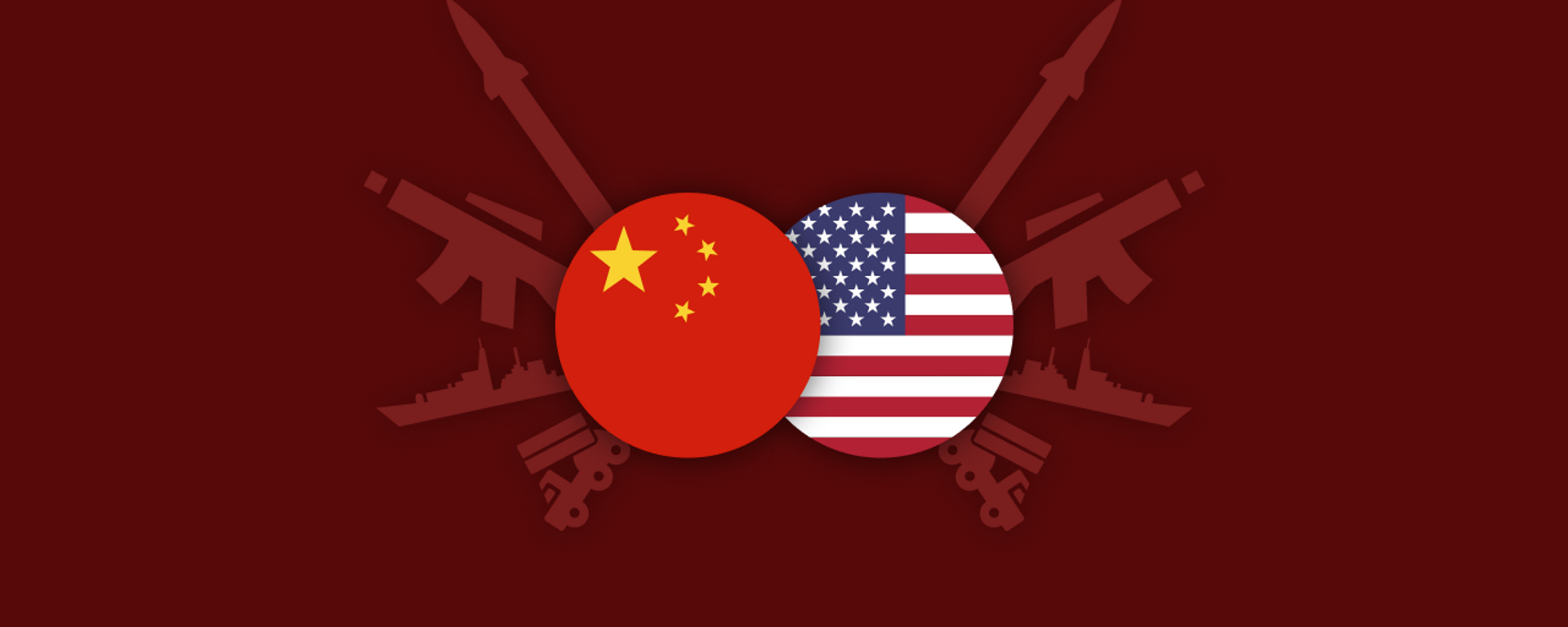
8 February 2023, 19:52 GMT
Chas W. Freeman Jr., a retired US diplomat and interpreter with decades of experience with China under his belt going back all the way to Richard Nixon’s 1972 visit to Beijing, where he served as the president’s main interpreter, says precision is crucial when talking about Chinese “threats” to America.
“China certainly poses no direct threat to the United States. It does pose a threat to American primacy in East Asia and potentially in the world. People forget that for most of recorded history, China was the largest, best governed, most technologically advanced and economically powerful state on the planet. And it seems to be returning to that status. There is an American reaction to this, which is almost psychotic, really,” Freeman said in an interview with Sputnik.
The veteran diplomat says the crux of the US-China confrontation is centered around the fact that Washington has trouble reconciling with the fact that it is no longer the “supreme player” on the world stage, but rather “one player, among others.”
International affairs observer and China expert Gal Luft echos Freeman’s sentiments, telling Sputnik that China doesn't want a war with the US, and would "only be a military threat if the US challenges the status quo over Taiwan.”
“I can’t see any other scenario in which the Chinese will want to use force – not in the South China Sea and not even in the East China Sea,” the expert, who serves as executive director of the Washington-based Institute for the Analysis of Global Security, added. Luft emphasizes that although Asian countries are generally very good at resolving problems, Taiwan is a different story, serving as a bright red line for China. “If the US continues to provoke and erode the status quo I could definitely see deterioration that could lead to war.”
Unlike the US, which is “overstretched and preoccupied with numerous threats and scenarios,” China’s military planning is focused on warfighting scenarios in its own neighborhood, which allows the PLA to “better optimize its resources," Luft says.
“The PLA and the rest of the Chinese defense ecosystem are focusing on asymmetric warfare and their investments are targeted to very few relevant war-fighting scenarios,” the observer explained. As far as Taiwan is concerned, the observer noted that Beijing was “preparing for hybrid war which includes many non-kinetic elements - cyber, space, economic coercion etc. - with which it can bring the island into submission without actual invasion.”
“China is patient and will continue to try to shape the strategic environment using non-military tools for as long as it can but it too has its limits and we are getting closer to them,” Luft warned.
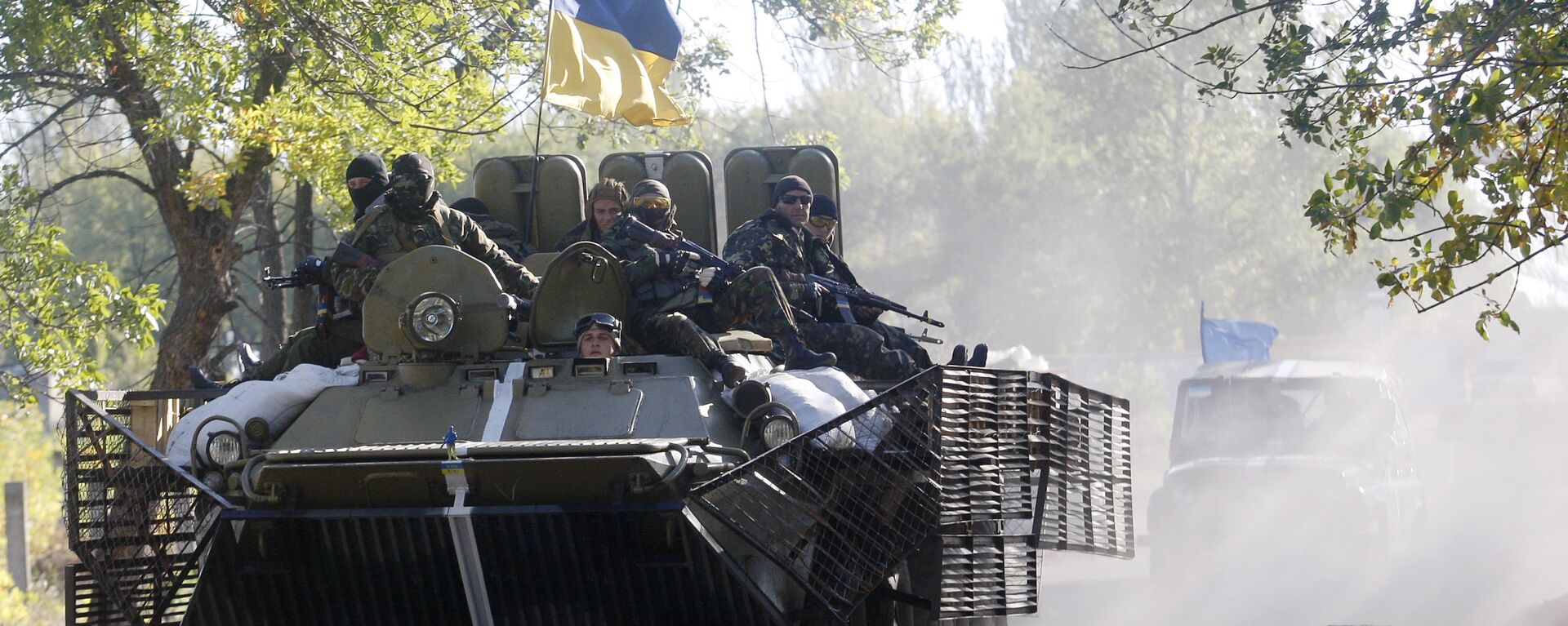
20 January 2023, 19:11 GMT
China Has Already Shifted the Regional Military Balance
Tuesday's hearing featured a number of other bombshell admissions regarding China’s growing capabilities. Admiral Harry Harris, former commander of the US Pacific Fleet and United States Indo-Pacific Command, testified that today, “the modernization of the PLA has changed the regional military balance, and significantly enough that the United States no longer can be confident that we would decisively defeat every type of play.”
What’s more, Harris said, it’s “infeasible” for the US to divert all of its global military potential toward China and Taiwan since the US cannot afford to pare down its commitments elsewhere around the world.
“Attempting to demonstrate superiority for all contingencies” vis-à-vis Beijing “would require a commitment of forces that would inhibit the United States from behaving like the global power that it is with global interests to which its military must also attend,” the admiral said.
China’s Navy
surpassed the US’s in total size in late 2021, with Beijing planning to expand the fleet of warships and submarines to some 460 total by 2030, according to the Pentagon. The US currently has about 280 ships and subs, and unlike China’s, which are concentrated in the Pacific, these are spread across the world.
Challenge ‘Across Almost Every Domain’
In his testimony, Harris also touched on China’s economic and technological advances, warning that “China’s considerable military buildup could soon challenge the US across almost every domain. The PRC is making significant advances in missile systems, including hypersonics, fifth generation fighters, [a] blue water navy and the next wave of technologies, including artificial intelligence and advanced space and cyber.”
“Geopolitically, Beijing seeks to supplant the United States as a security partner of choice for countries not only in the Indo-Pacific, but globally,” the admiral warned.
US military raw materials security is also under threat by China, according to Harris, who urged Washington to “work in our own enlightened self-interest to develop our own reliable sources of various pharmaceuticals and chemicals for weapon-bearing independent of the PRC.”
Pointing to a
recent report by the Hudson Institute, a Washington-based security think tank, which highlighted US dependence on China for “a number of critical energetics materials” used in explosives and propellants for bullets, artillery and missiles, Harris urged the US to “invest and innovate to right the errant course that we’re on,” or risk a situation in which “Joint Force will struggle to compete with the People’s Liberation Army in our future battlefields.”
US Right to Be Concerned by China's Technological Boom
Washington has good reason to be concerned about China's military-technological rise, according to Freeman.
“China has put its money into the development of a formidable STEM capability - science, technology, engineering and mathematics. Over one fourth of the STEM workers on the planet now are Chinese, and they are beginning to be very innovative. There is great concern in the US military about the Chinese program of so-called civil military fusion. This basically leverages the Chinese private sector and civilian state enterprises for the benefit of the military,” the veteran US China expert explained.
“China does lead now in a number of militarily important technologies. It has installed, apparently, rail guns on its ships. We attempted to develop those but were unable to do so. Its air-to-air missiles out-range ours. It does have a range of hypersonic missiles. We don't we have a defense against those.” In addition, “China has famously developed ballistic missiles with terminal guidance that can strike an aircraft carrier a thousand miles away from the coast. The Chinese have, in fact, begun to develop technologies that we don't have that are important for our military purposes,” Freeman said.
Ukrainian Lessons: A Blueprint for Taiwan?
A big portion of Tuesday’s hearing focused on Taiwan, and the “lessons” the NATO-Russia proxy conflict in Ukraine may have for the US strategy vis-à-vis the island.
“We need to apply those lessons and make sure that our military is modernized to meet the threats that we face today,” Adam Smith said. Calling the Ukrainian crisis “crucial” to the US’s “deterrence message against China,” the lawmaker suggested that if Russia was “able to achieve [its] aims lawlessly and through the use of military, that will only further embolden President Xi and his objectives in China.”
Smith argued that “visible preparation” of Taiwan’s defense forces against a potential PLA incursion may also prove a deterrent, and called on the Pentagon to “enhance” the island’s “porcupine position in the defense concept” through “things like investments in short-range anti-air and anti-ship defenses, naval mines and so forth.”
Admiral Harris confirmed that the military is looking at the “Taiwan front” through the lens of the “Ukraine front” to some extent.
“Ukraine is the wolf closest to the sled and we had to deal with Ukraine today, but I think there is more juice in that orange, if you will,” Harris said, pointing to the delivery of evermore advanced weapons systems to the Eastern European country by the US and its allies over the past year.
“I do believe that we need to do as much as we can for Ukraine, and we have the capacity to help Taiwan at the same time. It’s not binary,” Harris assured, when asked by a lawmaker to comment on the problem of the $19+ billion backlog of US weapons sales to Taipei, caused at least in part by arms deliveries to Kiev.
Harris called on Washington to abandon its decades-old policy of “strategic ambiguity” vis-à-vis Taiwan in favor of “strategic clarity,” – i.e. an outright alliance, and urged for a bilateral free trade agreement to be inked “as soon as possible.”
Either of these measures would undoubtedly be seen by Beijing as violations of multiple Sino-US agreements – including the diplomatic framework behind the One China principle – which requires Washington to refrain from diplomatic and military agreements with Taipei, and a 1982 communique
requiring US arms sales to Taiwan to drop to zero over time.
The former commander suggested that China’s leadership should “be reminded” of the potential for direct US-Chinese military-to-military engagement over Taiwan, and of “US military superiority in the Persian Gulf and Indian Ocean,” which “allows us to threaten the maritime shipping upon which China depends for access to energy, global markets and supply chains.”
In his address to the 20th Congress of the Chinese Communist Party last fall, President Xi Jinping
emphasized that Beijing is committed to peaceful reunification of the island with the mainland under the One Country, Two Systems model. He warned that “Taiwan is China’s Taiwan,” and that “resolving the Taiwan question is a matter for the Chinese, a matter that must be resolved by the Chinese.” Accordingly, Xi said, Beijing would “never compromise to renounce the use of force” to counter the aims of “outside forces and the few separatists seeking ‘Taiwan independence’.”
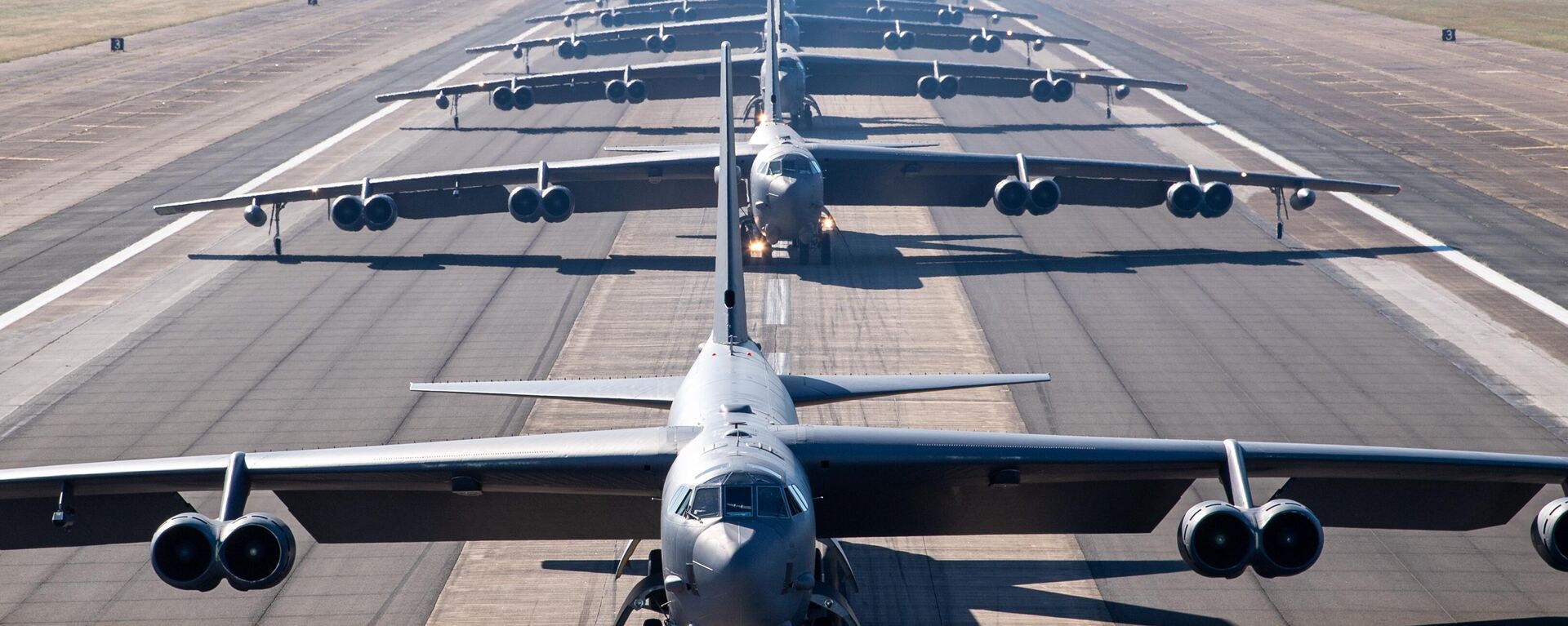
28 January 2023, 17:36 GMT
Comparing Taiwan, Ukraine ‘Misguided’ at Best, ‘Nonsense’ at Worst
Luft says comparing the crisis in Ukraine to a scenario of China-US conflict over Taiwan is at best “misguided,” because there are just “too many substantial geographical, operational, diplomatic and cultural differences that make it a very risky analogy.” At the same time, the observer noted, “the battlefield situation in Ukraine and the hesitancy of the West in providing essential platforms like tanks and planes will not inspire confidence in Taiwan.” The observer doesn’t expect Taipei to fall into the "trap" set by Washington as easily as Ukraine did in 2022, and believes ordinary Taiwanese may make their voice in preference of peace heard at the ballot box in 2024, where the liberal Progressive Democrats of President Tsai Ing-wen will face off against the nationalist Kuomintang – which favors rapprochement with Beijing.
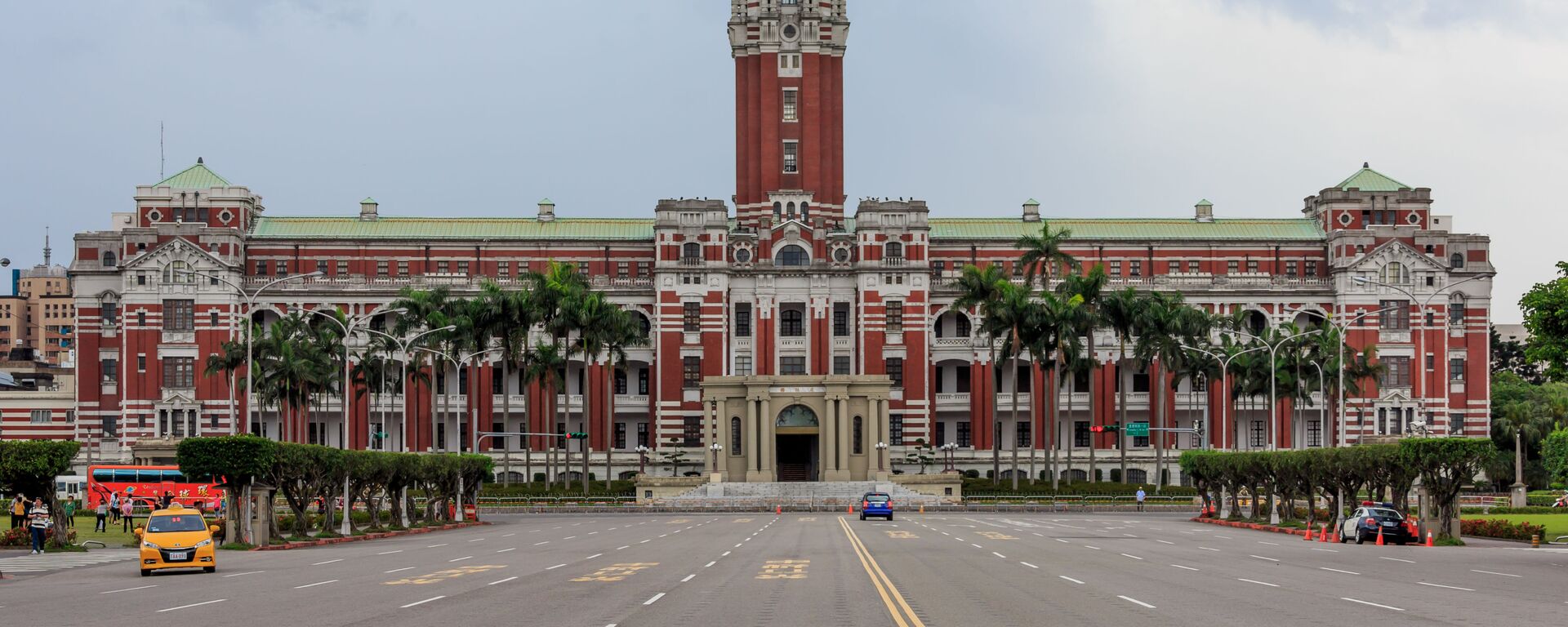
27 November 2022, 01:37 GMT
Freeman agrees with this assessment, suggesting that comparisons are “essentially nonsense,” with Ukraine a large European country with a long border with Russia and NATO, making it ripe for a proxy war, while Taiwan is a small island 100 miles (160 km) off the Chinese mainland, and 8,000 miles (12,800+ km) from America, in other words, “not next door.”
“It has not done what Ukraine did, namely organize a territorial defense. It has not spent eight years fighting other Ukrainians, Russian-speaking Ukrainians and training for war. It has not been trained by NATO to conduct the kind of operations that Ukraine has that have made it such a difficult task for the Russian army. So, these are very different situations,” Freeman emphasized. “Not to mention the fact that for most of the world, indeed, all but a very few countries, Taiwan is recognized as part of China. Ukraine is a separate sovereign state. So international reaction to the two if there were a war over Taiwan, which I hope there won't be, it would be quite different,” the retired diplomat added.
Freeman fears that the attempts by US lawmakers and military commanders to link the Ukrainian and Taiwan “fronts” is not only absurd, but “dangerous,” because it indicates thinking in Washington that the US could somehow fight a proxy war with China over Taiwan.
“More to the point, people say, well, Russia has had great difficulty in prosecuting its objectives in Ukraine and this more sober up the Chinese. No, I don't think so. The People's Liberation Army is not the Russian army. It's quite different, organized, quite differently, equipped, quite differently. And it's had 70 years to plan an invasion of Taiwan. No last minute decisions would be required. Everything is in place,” the diplomat stressed.
Freeman believes that if China has drawn any lessons regarding Taiwan from the conflict in Ukraine, it’s that “you should go all out from the beginning, use overwhelming force, decapitate the leadership so it can't have the kind of public relations counter-offensive that Mr. Zelensky has done and expect that the local population will not greet you with flowers and dancing girls, but with guns and bayonets and prepare accordingly…They don't want to get into a war of attrition. They want to do something that will be sudden and decisive if they have to at all. But they like the Russian government in the run up to the Ukraine war, want to settle this diplomatically, politically, through dialog across the Taiwan Strait. The last thing on earth they want is a war over part of their territory,” he emphasized.
Today's US is Yesterday's USSR
In a
speech before the American Academy of Diplomacy earlier this week, Freeman suggested that in some ways, the US in relation to China today is in the same position the USSR was in relation to the US during the Cold War.
“It's a theory which has some basis that it was the pressure of military competition with the United States that caused the Soviet Union to divert too much investment to its military while it neglected the needs of its civilian population and its economy. This ultimately caused the Soviet Union essentially to go bankrupt,” Freeman said in his interview with Sputnik.
“The problem was that the Soviet Union had a much smaller economy and a much less vigorous civilian economy than the United States, and it had limited capacity to ramp up its defense budget. That defense budget went up to somewhere around 12 to 15% of GDP, which is an extraordinary level in the case of the United States today. Every dollar that we spend on defense and then some is borrowed. We are not paying our own way. We do not have the capacity to surge the budget upward in the event of a war,” the observer noted.
“In some ways, China, which has kept its defense spending well below 2% of GDP, is in a position greatly to expand that defense spending. But we are not. So I think in this sense, you know, a competition with China that focuses purely on military matters runs the risk of breaking the bank in the United States,” Freeman stressed.
Ultimately, the observer believes that Sino-US tensions will continue for quite some time “before we return to a rational, peaceful, mutually cooperative and beneficial relationship. In the meantime, we will have tensions. And what we've just shown with the balloon nonsense is that we don't know how to handle the crisis. And that's pretty dangerous, pretty frightening.”
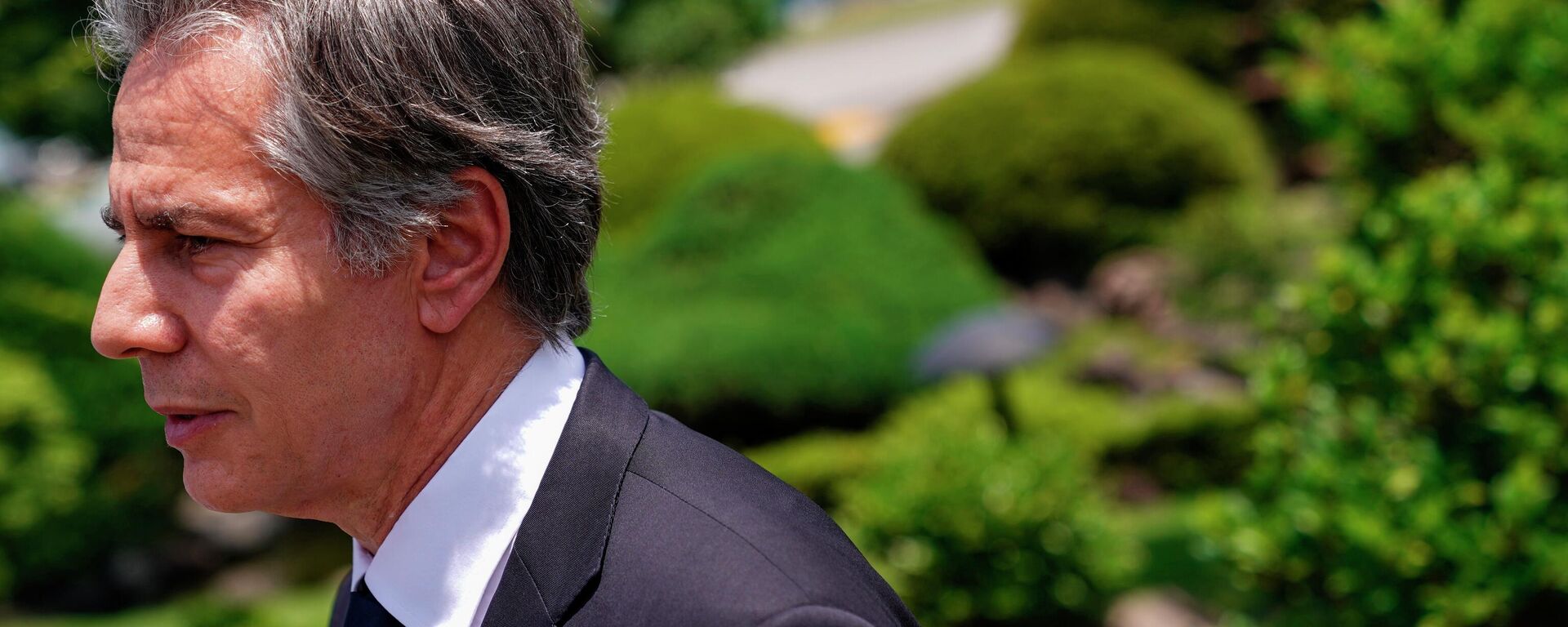
8 February 2023, 18:44 GMT


